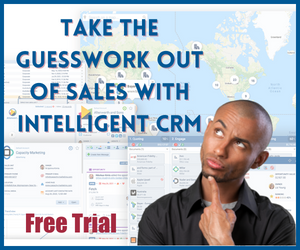In a recent episode of the Expert Insight Interview, host John Golden, representing a well-known online sales magazine and Pipeliner CRM, sat down with Scott Weavil, the founder of Sierra Pacific Partners. Scott, an expert in sell-side mergers and acquisitions advisory services for lower middle market businesses, shared invaluable insights on the intricacies of selling a business in this market segment. This blog post delves into the key themes discussed in the episode, providing detailed, actionable advice for business owners considering selling their companies.
Preparation for Selling a Business
Early Preparation is Key
Scott emphasizes the importance of early preparation when considering the sale of a business. The sooner a seller begins to prepare, the better positioned they will be to achieve a successful outcome. Key elements to focus on include:
- Clean Financials: Ensure financial records adhere to Generally Accepted Accounting Principles (GAAP). Buyers are keen on understanding a company’s financial health, and organized, transparent financials can significantly impact the sale process.
- Consistent Sales Growth: Demonstrate a track record of growing sales. This not only makes the business more attractive to buyers but also helps it achieve a higher valuation.
- Reducing Dependency on the Seller: A business that heavily relies on the seller for customer relationships can raise concerns for buyers about its future stability post-sale. It’s crucial to build a robust management team and diversify customer relationships.
Actionable Tips:
- Conduct a financial audit to ensure all records are accurate and up-to-date.
- Develop a growth plan that outlines strategies for increasing sales and market share.
- Train and empower your management team to handle key customer relationships and operational responsibilities.
What Buyers Look For
Key Buyer Considerations
Buyers are particularly interested in several critical aspects of a business:
- Clean Financial Records: As mentioned earlier, transparent and accurate financials are a must.
- Track Record of Growing Sales: Consistent sales growth indicates a healthy and scalable business.
- Business Model Independence: A business model that does not rely heavily on the seller is more attractive to buyers. This includes having a strong management team and diversified customer base.
- Customer Concentration Risks: High dependency on a few major clients can be a red flag for buyers. Diversifying your customer base can mitigate this risk.
Actionable Tips:
- Regularly review and update financial records to ensure accuracy.
- Implement strategies to diversify your customer base and reduce dependency on a few major clients.
- Develop a succession plan that outlines how the business will operate without the seller’s direct involvement.
Market Trends and Buyer Preferences
Current Market Trends
Scott notes that private equity funds are increasingly active in the lower middle market. These funds often seek businesses with recurring revenue models, such as SaaS companies, as they provide a more predictable income stream. While it can be challenging to predict which industries will be hot at any given time, certain characteristics, like recurring revenue, are consistently attractive to buyers.
Actionable Tips:
- If applicable, consider transitioning to a recurring revenue model to make your business more attractive to buyers.
- Stay informed about market trends and buyer preferences to position your business advantageously.
Deal Structures
Understanding Deal Structures
Scott elaborates on the various ways a deal can be structured, distinguishing between equity transactions (stock deals) and asset transactions. Key points include:
- Equity Transactions: Buyers acquire the company’s stock, taking on all assets and liabilities.
- Asset Transactions: Buyers acquire the company’s assets, including goodwill, but not the stock itself.
- Rollover Equity and Earnouts: These terms can significantly impact the seller’s financial outcome. Rollover equity involves the seller retaining a minority stake in the business post-sale, while earnouts are contingent payments based on future performance.
Actionable Tips:
- Consult with a financial advisor to understand the implications of different deal structures.
- Negotiate terms that align with your financial goals and risk tolerance.
Emotional Preparation for Sellers
The Emotional Journey
Selling a business can be an emotional experience for owners who have invested significant time and effort into building their companies. Scott discusses the need for sellers to mentally prepare for the transition, including the possibility of changes in management and operations post-sale.
Actionable Tips:
- Seek support from family, friends, or a professional counselor to navigate the emotional aspects of selling.
- Prepare for the due diligence process, which may involve answering difficult questions about the business.
Valuation Considerations
Understanding Valuation
Valuation is a critical aspect of the selling process. Scott outlines standard methods used to value a business, focusing on the multiple method, which compares the business’s earnings (EBITDA) to similar companies sold. He stresses the importance of realistic expectations regarding valuation.
Actionable Tips:
- Work with a professional appraiser to obtain an accurate valuation of your business.
- Research comparable sales in your industry to set realistic expectations.
The Importance of Working with an Intermediary
Advantages of an Experienced Advisor
Scott highlights the complexities of the selling process and the advantages of working with an experienced intermediary like Sierra Pacific Partners. Intermediaries can:
- Maintain confidentiality during the sale process.
- Manage negotiations and drive the deal forward.
- Ensure a smooth transaction and address any issues that arise.
Actionable Tips:
- Engage an experienced intermediary early in the process to benefit from their expertise.
- Clearly communicate your goals and expectations to your advisor.
Understanding the “Why Now”
Seller Motivation
The episode concludes with a discussion on understanding the seller’s motivation for selling. Buyers want to know the reasons behind the sale, as it can impact their perception of the business and the seller’s commitment to a smooth transition.
Actionable Tips:
- Clearly articulate your reasons for selling to potential buyers.
- Be transparent about your motivations to build trust and facilitate a smoother transaction.
Conclusion
Selling a lower middle market business is a complex and multifaceted process that requires careful preparation, realistic expectations, and emotional readiness. By following the actionable tips outlined in this blog post and leveraging the expertise of an experienced intermediary like Scott Weavil, business owners can navigate the complexities of the selling process and achieve a successful outcome. For further guidance, consider contacting Scott and his team at Sierra Pacific Partners.
Our Host
John is the Amazon bestselling author of Winning the Battle for Sales: Lessons on Closing Every Deal from the World’s Greatest Military Victories and Social Upheaval: How to Win at Social Selling. A globally acknowledged Sales & Marketing thought leader, speaker, and strategist, he has conducted over 1500 video interviews of thought leaders for Sales POP! online sales magazine & YouTube Channel and for audio podcast channels where Sales POP! is rated in the top 2% of most popular shows out of 3,320,580 podcasts globally, ranked by Listen Score. He is CSMO at Pipeliner CRM. In his spare time, John is an avid Martial Artist.







Comments